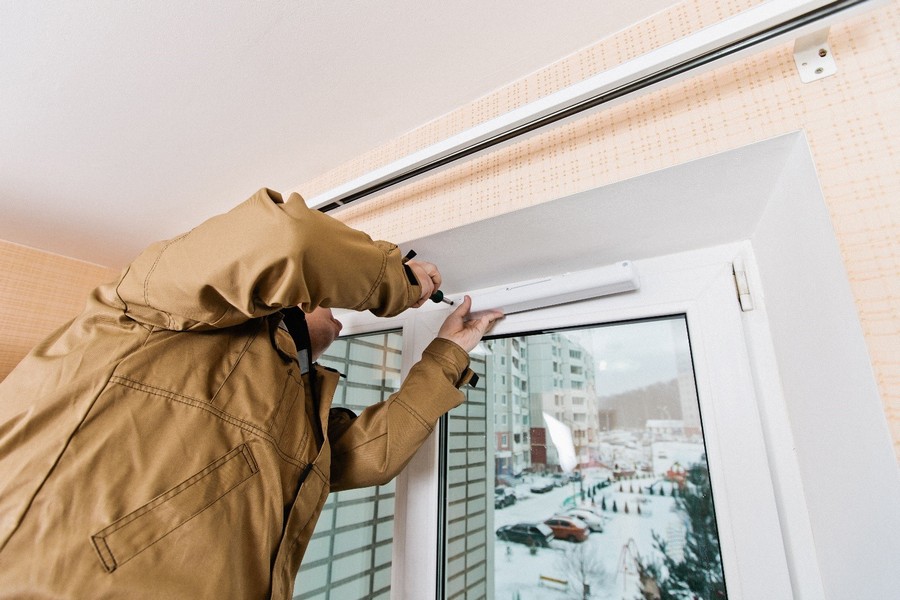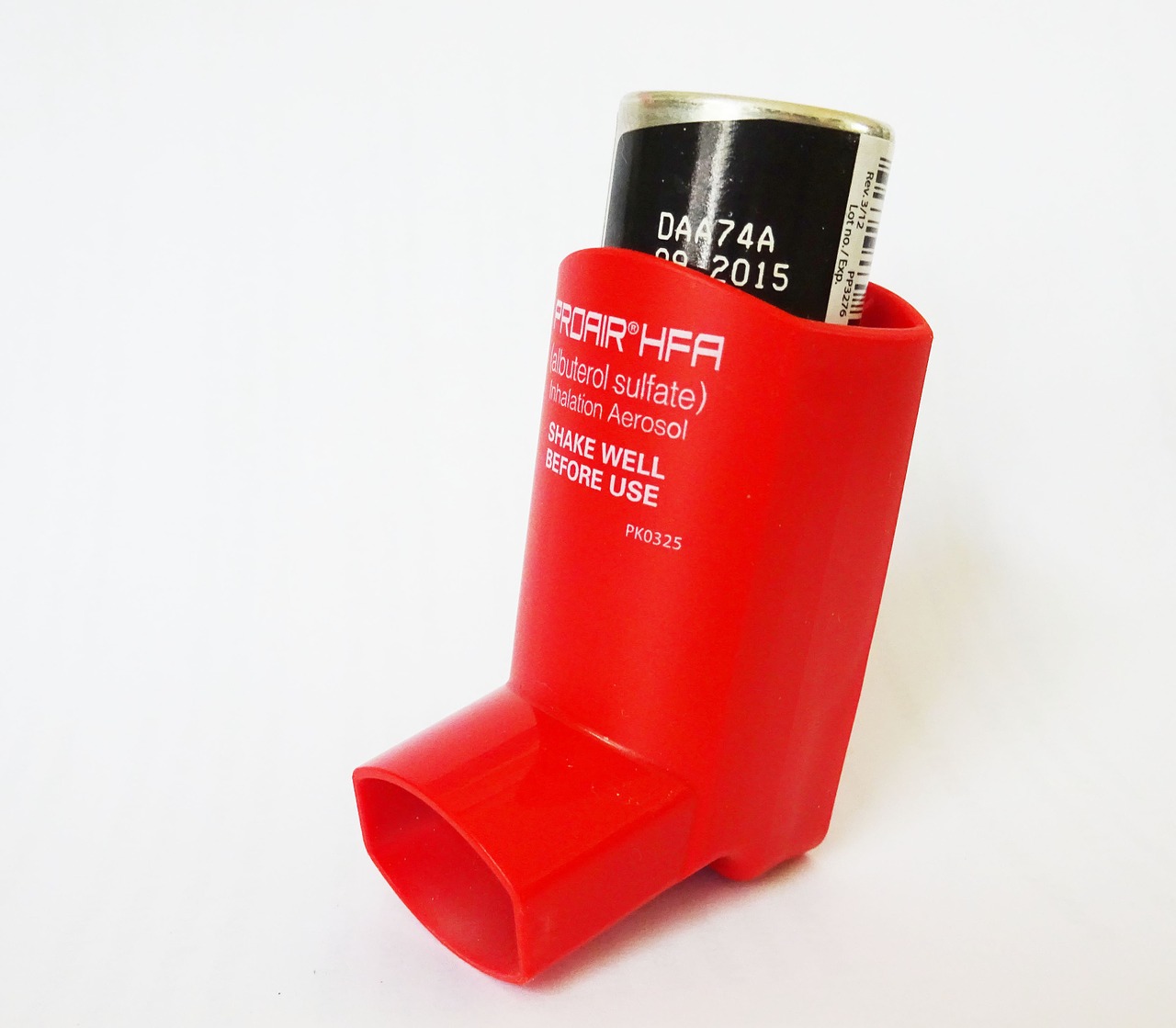Rating of the best supply valves for 2024

The main purpose of plastic windows is to protect the living space from street dust and dirt, as well as from extraneous noise. In addition, they reliably retain heat, providing the level of comfort necessary for life. But, unfortunately, these PVC designs are not without certain disadvantages. For example, by providing maximum tightness, they prevent natural air circulation. To correct this unfortunate omission and open access to fresh air in the room, a special ventilation valve was invented.
General design information
The ventilation valve (also known as the supply valve, also known as the air clinket) is mounted on the already supplied window block. Its design includes:
- Air intake - an external module equipped with a special visor that prevents dust, fluff, small insects and precipitation from entering the room;
- Retractable working channel for air flow - mounted in the profile and fastened with a sleeve;
- The standard filter, adjusting mechanism and outlet nozzle are internal elements responsible for changing the air flow rate.
By its appearance and essence, it is a regular slot in the window, in which there are dampers, with which the air flow is regulated.

Functioning diagram
The supply valve is a passive ventilation module for plastic windows. For its full functioning, i.e. full air circulation, the outside temperature must be from +5 degrees Celsius and below. Under these conditions, a difference in pressure outside the window and in the room will be created. At the same time, the natural absorption of oxygen into the room from outside will be maximally facilitated. At the same time, warm air from the apartment will go out into the street. If the specified temperature conditions are not achieved, then air circulation through the supply valve can be carried out only forcibly.
Thus, for the structure to work properly, the following criteria must be met:
- Mounted indoor exhaust ventilation system;
- Hermetic closing of the front door;
- The possibility of exchanging air currents between rooms in an apartment with open doors or through slots starting from 20 centimeters.
The need for installation on PVC windows
The organization of a competent ventilation system is the key to creating a comfortable microclimate inside the room. In this case, it is important that new air gets into the room on a permanent basis, and the old, polluted and with a high content of carbon dioxide, is removed outside. In the old days, when wooden window blocks were widely used, this was achieved to some extent with the help of cracks in the frames, which formed over time. Modern PVC constructions have already been spared such ailment, therefore, due to their tightness, such a method of natural ventilation is impossible.
For this purpose, supply valves were developed, designed to ensure the creation of the most comfortable microclimate in a room with double-glazed windows. Of course, you can open the sash wide open, but sometimes this is impossible due to the extremely low temperature outside. And if you do not ventilate the room at all, then the humidity in it may increase, which will cause the formation of black mold. In addition, the air inside will be stale and suffocating, and people who are there will begin to experience oxygen starvation, which will directly affect their general well-being and performance.
Therefore, the method of full ventilation has its significant disadvantages:
- When the window is open, the room becomes cold and noisy;
- Drafts immediately arise, because the air flows are poorly amenable to regulation through the opening angle of the window sash;
- At the same time, there is a problem of dust or precipitation from outside.
Advantages and disadvantages of supply ventilation
The undoubted advantages include the following factors:
- Oxygen is continuously supplied to the room through the permanent circulation of air masses;
- Drafts are absent as a phenomenon (a particularly important point for children's rooms);
- A healthy climate is created in the apartment;
- With a constant air flow, the appearance of condensation is impossible and, accordingly, there are no prerequisites for the development of mold and fungi;
- The design makes it possible to adjust the air supply level;
- The device practically does not reduce the area for the light opening;
- Noise and heat insulating properties of a glass unit are not reduced;
- Easy to install and operate.
However, it is worth mentioning a few disadvantages, which are rather situational and variation in nature:
- Samples with mechanical control need periodic adjustment, which will depend on external weather conditions, the number of people in the room, etc. Moreover, the mechanic's control is located on the upper part of the window frame and it still needs to be reached;
- At low temperatures and an abundance of precipitation in winter, freezing of external elements is possible;
- In the absence of a filter, the valve can pass fluff, dirt, dust from the street.
Selection of the supply and ventilation valve
In order to choose the right air clinket for your glass unit, certain parameters must be observed. This primarily concerns the material. Devices are made not only from plastic, but also from metal and wood. Thus, it is desirable that the clinket material matches the profile material. For example, for industrial aluminum profiles, a metal version is suitable, and for PVC - a plastic one.
Next, you should choose the option for adjusting the flow: mechanical will cost less, automatic requires less attention, but it costs more. Models from the budget segment are not equipped with adjustment at all, they can only limit air penetration in gusty winds.
Additionally, when selecting a clinket, you should pay attention to the following points:
- Folded and slotted valve samples are considered the easiest to install;
- The adjustment option should be selected based on the number of people usually in the room where the device is supposed to be installed;
- Some clinket models can be bulky and stand out against the background of the window frame, more expensive samples can imperceptibly fit into the overall interior of the room - it all depends on the wishes of the buyer.
Varieties of supply clinkets for PVC windows
Folded
They are distinguished by a low throughput (about 5 cubic meters of air per hour), however, they provide maximum sound insulation. To increase the productivity of the seam system, experts recommend installing two devices at once on one window unit. Also, their advantages include:
- Reasonable price;
- Possibility of installation without dismantling the window block;
- Ease of installation;
- Possibility of subsequent automation of control;
- In most cases, such clinkets are supplied with moisture sensors.
As a result, folded models are good for periodic ventilation with a sufficient level of heat retention in the room.
Slotted
The standard dimensions of this device are as follows: width - from 17 to 40 centimeters, height - from 12 to 16 centimeters. Usually they are made in the form of a universal unit, but there are also separate types with external and internal modules. They gained popularity among buyers due to the democratic price and good bandwidth. Among other things, their advantages include:
- Permissibility of installation without removing the window block;
- After installation, the noise and heat insulation of the window is not lost;
- Good throughput (up to 20 cubic meters per hour).
- It is worth noting that the installation of a double slotted valve block will require milling. However, this only applies to models from the economy class.
Automatic and manual
Manual clinkets are the cheapest option. Adjustment is made by moving the handle on the valve body. At the same time, the features of the microclimate in the room are taken into account by the user independently.
In total, four positions of the adjusting knob are possible:
- Central - air flows in all directions;
- Lower - the air only goes down;
- Top - air passes only over the top;
- Position "closed" - the air flow into the room is completely blocked.
In models with automatic control there is a built-in humidity sensor, thanks to which the clinket independently regulates the intensity of the air flow into the room.
Overhead
Outwardly, they are handles on PVC windows and replace the usual ones, therefore they install such devices on new double-glazed windows. Their features include:
- Most often, it is necessary to fit the frames and doors of the glass unit;
- Usually used for non-residential premises (warehouses, retail and production areas, etc.);
- Have a reinforced filter option;
- They have low soundproofing properties;
- Their installation is possible both in blind and in openable window blocks.
An undoubted plus is the huge throughput - up to 100 cubic meters per hour.
Ventilation control
The ventilation clinket can be opened automatically or manually. In the latter case, the user, by changing the position of the shutter, independently achieves the stabilization of the air mass flow. He also monitors the duration of airing (in case of oversight, it is quite possible to freeze the room).
In the automatic mode of opening the shutters, action is possible in two ways:
- Adjustment of the curtain position is determined by a polyamide sensor - in conditions of high humidity, the flow area increases, and at low humidity, it decreases;
- The air supply level is set based on the pressure difference between the indoor and outdoor areas, and the range of the curtain opening is determined by the user.
With all the advantages of smart automatic flow valves, they often simply do not have the function of completely blocking ventilation.Moreover, their prices are far from small.
Features of the choice of some technical parameters
First of all, you should not focus on super-powerful models - their exorbitant power may simply be unclaimed. Therefore, you should decide on the required bandwidth. It depends on the size of the flow area and the resulting pressure difference at the inlet / outlet. Thus, a device with technical parameters of 15 cubic meters per hour at a pressure of 10 Pascals will not necessarily allow more oxygen to pass through than a model with 12 cubic meters per hour at 5 Pascals. There is no universal volume of air exchange - everything is calculated individually, but experts say that a standard office cabinet will be sufficient by passing a capacity of 20-35 cubic meters per hour at 10 Pascals.
It is worth recalling that after installing the clinket, the level of sound insulation in the room should not change. However, it can be improved additionally by purchasing a valve model with soundproof inserts (a kind of acoustic labyrinth inside the structure, damping sound vibrations), which reduce noise when the device operates in the air flow mode. Thus, the standard 30 - 35 decibels, which the glass unit itself provides, can be reduced to 15 decibels by means of inserts on the valve.
It must also be remembered that water vapor can be released through the valve openings, which in winter will certainly lead to icing of the device and the risk of its subsequent breakdown. In this case, it is better to take care of the so-called "thermal break" - this is another insert in the clinket between the external and internal modules, made of plastic, designed to prevent the appearance of ice.
For the warm season, it is advisable to use replaceable mesh filters in order to prevent large insects from entering the valve channels.
Ventilation systems - turnkey solutions
If you focus on budget options, then the simplest are considered climatic valves... They are easy to install, they do not emit much noise during operation, but nevertheless they lower the physical sound insulation of the window unit, although this is not particularly felt. Maintenance of such a system is quite simple - it only needs to be cleaned every six months before the onset of warm / cold periods. Dust is removed with a damp cloth or vacuum cleaner; it is not recommended to wash the channels with household chemicals.
In the middle segment, the most popular is wall inlet valve, which is installed by drilling holes in the wall. This system has an increased throughput (up to 50 cubic meters per hour). There are models equipped with a filter that cleans the incoming air at a mechanical level - traps fine fractions of dust and dirt, insects, fluff, etc. The downside may be that with improper installation, during the onset of low temperatures, the valve installation site may freeze up, and air heating in this system is not provided.

Another striking representative of the middle segment is mechanical ventilation system... It looks like a wall one, but it additionally has a fan for blowing air, so its capacity can reach from 40 to 120 cubic meters per hour. However, this system is not equipped with filters.
In the upper segment are expensive systems called "Breathers"... Their main advantages:
- Climate controlled;
- Air purification takes place according to a three-stage scheme;
- There is a recirculation mode, due to which the air inside the room is cleaned;
- High productivity - from 30 to 140 cubic meters per hour;
- Air heating possibility;
- Maintaining the soundproofing mode at a level of up to 19 decibels.
The same systems are distinguished by the speed of installation, if it is installed by qualified specialists - no more than an hour. Their downside is the extremely high cost.
Rating of the best supply valves for 2024
For PVC structures
2nd place: Air-Box Comfort
The model provides the standard air flow required for a standard room in an apartment. Keeps the mode of heat and noise insulation well. Perfectly compatible with all types of tilt-and-turn PVC windows. Provides smooth regulation of air flow.

| Name | Index |
|---|---|
| Manufacturer country | China |
| Width, mm | 44 |
| Height, mm | 20 |
| Length, mm | 355 |
| Weight, gram | 75 |
| Price, rubles | 500 |
- Installation does not require window milling;
- Confident protection against the formation of fungus and mold;
- Maintaining the normative circulation of air masses.
- The need to replace a typical seal in the window with a special one.
1st place: Aereco EFM 1289
Standard self-adjusting valve for plastic window. Unlike other models, the incoming air masses are not directed vertically upward, but at a certain angle in relation to the window, which prevents the formation of ice in cold weather. It has a good level of thermal insulation, retains the set mode for suppressing sound vibrations.

| Name | Index |
|---|---|
| Manufacturer country | France |
| Width, mm | 50 |
| Height, mm | 25 |
| Length, mm | 390 |
| Weight, gram | 120 |
| Price, rubles | 1200 |
- Affordable price;
- Large opening angle of the damper;
- Increased thickness.
- During installation, additional window milling is required
Adjustable feed
2nd place: Maico ALD 125/125 VA
A popular model from a European manufacturer. By fine-tuning the variability of the damper setting, air exchange can be adjusted in the range from 30 to 125 cubic meters per hour. Supplied with insect screen and additional sleeve. The design uses the latest G-2 air filter.

| Name | Index |
|---|---|
| Manufacturer country | Germany |
| Air exchange, cubic meters / hour | 30 to 125 |
| Air filter | G-2 |
| Diameter, mm | 125 |
| Depth mm | 500 |
| Price, rubles | 11000 |
- Good complement of the set;
- Elegant appearance;
- Soundproof materials are used in the construction.
- Small serviced area - 30 square meters
1st place: Vents PS 101
The modern valve model is designed to ensure effective oxygen circulation both in household premises and in production. The grilles are made of high quality ABS plastic. The special design of the free area allows for a uniform and smooth intake of air volume. Thanks to its discreet design, it fits perfectly into any interior.
| Name | Index |
|---|---|
| Manufacturer country | Ukraine |
| Air exchange, cubic meters / hour | 45 |
| Air filter | G-3 |
| Diameter, mm | 103 |
| Depth mm | 305 |
| Price, rubles | 1700 |
- Eco-friendly and compact body;
- Improved filter;
- Quiet work.
- Insulation not included, sold separately
With mechanical ventilation
2nd place: KPV-125 (KIV-125)
This valve has a democratic design and demonstrates average performance in operation. Has a fairly noisy fan. The valve control is simplified: a cord is specially brought out, with the help of which the position of the damper is adjusted. In the cold season, the model showed good thermal insulation properties.

| Name | Index |
|---|---|
| Manufacturer country | Russia |
| Filter class | Form 5 |
| Dimensions, mm | 400x200x100 |
| Diameter, mm | 133 |
| Price, rubles | 2500 |
- Affordable price;
- Relatively easy installation process for a specialist;
- Fights condensation well.
- The exterior can be out of harmony with the interior.
1st place: Vakio Kiv
This valve is designed for installation in a wall system. Mechanical ventilation is provided by an ultra-quiet fan that pumps air evenly inside. The built-in filter does not let fine particles of dirt and fluff with dust into the serviced room. Thanks to its modest design, it fits perfectly into the interior.

| Name | Index |
|---|---|
| Manufacturer country | Russia |
| Filter class | Form 6 |
| Dimensions, mm | 470x222x94 |
| Diameter, mm | 132 |
| Price, rubles | 4900 |
- Excellent ratio in the category "price / quality";
- Super quiet fan operation;
- Guaranteed no drafts.
- Not found
Instead of an epilogue
The modern market for supply valves allows you to choose a model for every taste and budget. Experts advise purchasing these devices through online trading platforms, which will significantly save money. Models from Western manufacturers are considered popular, however, and domestic brands have long been producing analogues that are not nearly inferior to Western ones, but at significantly low prices. At the same time, the installation of this equipment (be it models for PVC windows or for wall systems) should be carried out by specialists, so that there is no loss in heat and sound insulation due to improper installation.
new entries
Categories
Useful
Popular articles
-

Top rating of the best and inexpensive scooters up to 50 cubic meters in 2024
Views: 97661 -

Rating of the best materials for noise insulation for an apartment in 2024
Views: 95022 -

Rating of cheap analogues of expensive medicines for flu and colds for 2024
Views: 91751 -

The best men's running shoes in 2024
Views: 87681 -

Top ranking of the best smartwatches 2024 - price-quality
Views: 85091 -

Best Complex Vitamins in 2024
Views: 84801 -

The best dye for gray hair - 2024 top ranking
Views: 82406 -

Rating of the best wood paints for interior use in 2024
Views: 77202 -

Ranking of the best action cameras from China in 2024
Views: 75269 -

Rating of the best spinning reels in 2024
Views: 74827 -

The most effective calcium supplements for adults and children in 2024
Views: 72463 -

Top rating of the best means for male potency in 2024 with a description
Views: 68296









